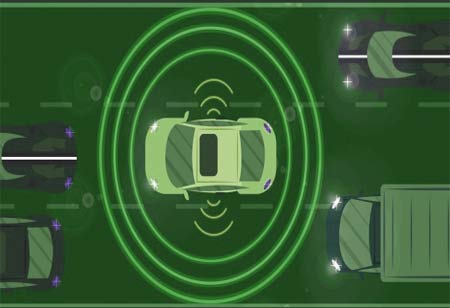THANK YOU FOR SUBSCRIBING
THANK YOU FOR SUBSCRIBING
Be first to read the latest tech news, Industry Leader's Insights, and CIO interviews of medium and large enterprises exclusively from Auto Tech Outlook

By
Auto Tech Outlook | Wednesday, February 19, 2025
Stay ahead of the industry with exclusive feature stories on the top companies, expert insights and the latest news delivered straight to your inbox. Subscribe today.
Sensor fusion in automotive enhances safety, autonomous driving, and ADAS, with AI-driven algorithms and edge computing paving the way for fully autonomous vehicles and green mobility.
FREMONT CA: The automotive industry has undergone groundbreaking transformation, integrating technologies that enhance safety, efficiency, and overall user experience. One such innovation is sensor fusion, a technology that merges data from multiple sensors to improve the understanding of the surrounding environment. This advancement has become the backbone of modern autonomous and advanced driver-assistance systems (ADAS), bringing safer and smarter vehicles to life.
Sensor fusion is critical in various automotive applications, enhancing vehicle intelligence and safety. Autonomous vehicles enable self-driving systems to detect objects, navigate complex environments, and make real-time decisions. Advanced sensor fusion algorithms facilitate safe maneuvering through urban landscapes. Similarly, in Advanced Driver Assistance Systems (ADAS), sensor fusion powers features such as adaptive cruise control, lane-keeping assistance, and collision avoidance. These systems provide timely feedback and interventions by continuously monitoring the driving environment, improving driver safety and comfort. Additionally, sensor fusion enhances safety features, including collision avoidance systems, blind-spot detection, and parking assistance, by identifying potential hazards, issuing driver alerts, and automatically intervening in critical situations. Furthermore, it supports Vehicle-to-Everything (V2X) communication by integrating external data from traffic signals and connected vehicles, thereby enhancing predictive road safety and reducing congestion.
Recent advancements have significantly improved sensor fusion capabilities. AI-driven algorithms process vast amounts of sensor data in real-time, enhancing object detection and decision-making. The cost of lidar technology has decreased, making it more accessible for commercial vehicles. Additionally, edge computing enables onboard data processing, reducing latency and improving response times in critical scenarios. Leading companies such as NVIDIA, Bosch, and Mobileye continue to develop sophisticated chipsets and platforms dedicated to efficient sensor data processing, driving the next generation of intelligent automotive technology.
The future of sensor fusion in automotive technology is promising, with several key advancements on the horizon. As sensor fusion technologies evolve, fully autonomous vehicles (Level 5) are expected to become a reality, revolutionizing mobility. Integrating artificial intelligence will further enhance these systems, enabling smarter and more efficient decision-making. Additionally, the gradual reduction in sensor and computational costs will drive mass adoption, making sensor fusion a standard feature in affordable vehicles. Furthermore, by optimizing routes and improving vehicle efficiency, sensor fusion will be pivotal in advancing green mobility supporting the global transition toward environmentally sustainable transportation.
Sensor fusion transforms the automotive industry, paving the way for safer, more efficient, and autonomous vehicles. Merging data from multiple sources overcomes the limitations of individual sensors, providing a robust system that can navigate complex environments. As innovations continue, sensor fusion will undoubtedly drive the next generation of vehicles, reshaping how individuals move and interact with the world around them.
 Copyright © 2025 AutoTech Outlook. All Rights Reserved | Privacy Policy | Subscribe | Sitemap | About us | Feedback Policy | Editorial Policy
Copyright © 2025 AutoTech Outlook. All Rights Reserved | Privacy Policy | Subscribe | Sitemap | About us | Feedback Policy | Editorial Policy 



